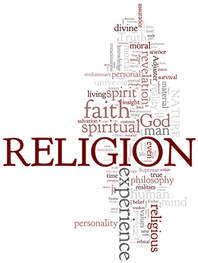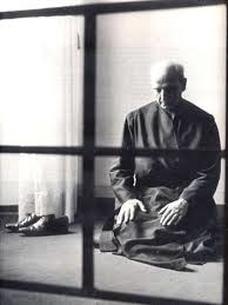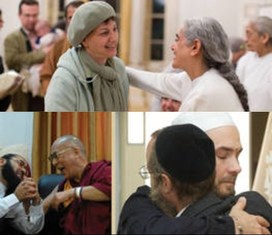
Many people never get beyond the externals of a faith. This is true both of believers and non-believers, insiders and outsiders. Some people are religious in a cultural sense and go regularly to their place of worship for the sake of community. They sometimes put themselves into the category of being ‘belongers’ but not ‘believers’ while others find the external institutional aspect of religion not at all helpful and call themselves ‘believers, not belongers’ – interested more in spirituality than religious doctrine, happy to accept the spiritual teaching but not willing to get involved in the institution or community. It’s part of the crazy world of religion as it exists today.
There’s a Catholic theologian, Aloysius Pieris, who comes from Sri Lanka and has long experience in Christian – Buddhist dialogue. He speaks of all religions having both oppressive and liberating aspects. Unfortunately for many people their experience of religion has been oppressive and I often think that if this is so they are right to give up their religion. Religion must never injure our humanity or our well-being. Today there are many examples of abuse within religion as well as without and it’s scandalous. In my own day I am appalled at the times parents cut themselves off from their children because those children had married outside their faith – and most often this faith was not a different faith but simply a different denomination of their own faith. Obedience to religious authority was seen as more important than family unity. This is definitely the wrong kind of religion and to my mind quite heretical. This is an example of institutional religion being so self-important that it’s forgotten the spiritual ideal of love that’s supposed to be at its heart. Teilhard de Chardin once said that we are not human beings trying to be spiritual but spiritual beings trying to be human. How different would institutional religion look if promoting humanity was its guiding star.
I do think that the institutional aspect of religion is important. It’s what gives structure to a faith; it gives a sense of intergenerational community; it helps people look outwards to the suffering of the world and have a concern for its betterment. Hopefully it helps people live an upright and moral life. It can make an important contribution to the health and well-being of society but it has to be seen in context. For me it’s like a framework, scaffolding that supports spiritual growth and practice. It’s like a field or box in which there is a pearl of great price but the externals can obscure this as much as they can reveal it. A spiritual practice of prayer and meditation are necessary if the true heart of religion is to be recognised, understood and appreciated for what it can contribute to our personal human journey. Once found this treasure can help us evaluate and participate in our religion in a way that is liberating. It can help us sit lightly on some of the structures, recognising their importance but acknowledging that these are relative to its spiritual heart which should always take priority I think.
At the meeting of our Christian – Buddhist dialogue group we agreed we wouldn’t come as formal representatives of our faiths but as practitioners. It would be a meeting of minds and hearts, a sharing of what and how we as practitioners experience our faith. We felt we already knew something of the externals of each other’s faith, so we could concentrate on our practice and on issues that face each of us as members of our race and participants in our world. It was liberating to know that the dialogue would not focus on what our faiths said or taught so much as what we believed and understood at a personal level. This meeting was only a beginning but it offers hope for a truly spiritual sharing that will help us recognise, experience and articulate that pearl of great price in our own faith but also in the other




 RSS Feed
RSS Feed
